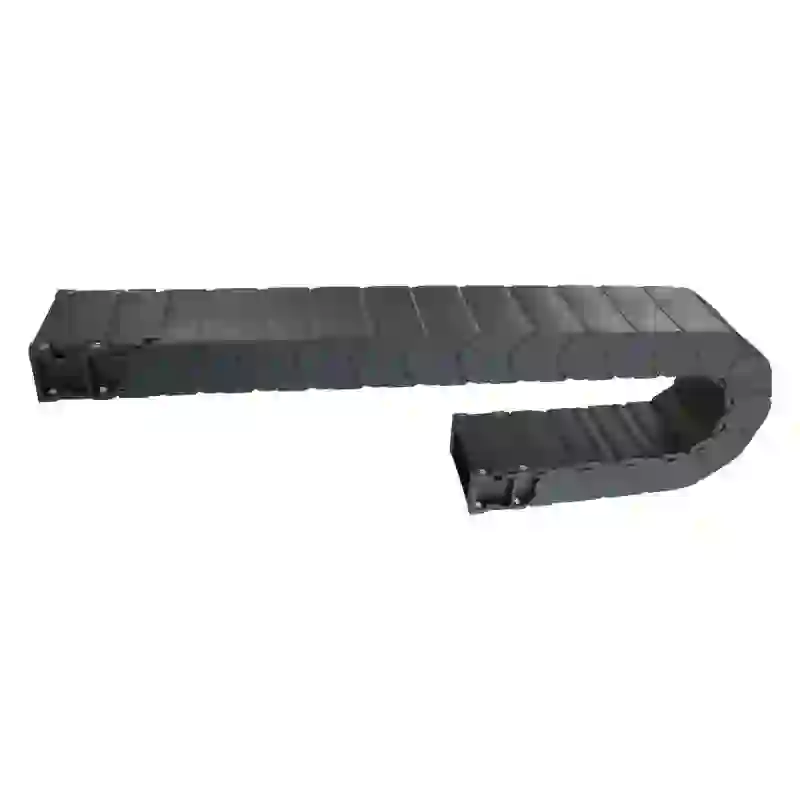flexible cable carrier
Understanding Flexible Cable Carriers An Essential Component for Modern Machinery
In today's fast-paced industrial environment, the efficiency and functionality of machinery is heavily reliant on the effective management of cables and hoses. One essential component that has emerged to address these needs is the flexible cable carrier, also known as a drag chain. These innovative devices play a crucial role in organizing and protecting cables and hoses as they move, ensuring smooth operations in various applications ranging from manufacturing to robotics.
A flexible cable carrier is a modular system designed to guide and protect moving cables and hoses in systems with dynamic motion. This technology is particularly vital in machinery that involves repetitive movement or rotational motion, where cords can become entangled or suffer from wear and tear. By using a cable carrier, manufacturers can create a safer, more organized workspace that minimizes the risk of damage and downtime.
The design of a flexible cable carrier allows it to accommodate multiple types of cables and hoses within its structure, which is typically made from durable materials such as plastic, steel, or aluminum. This versatility means that these carriers can be used in various applications, including CNC machines, automated manufacturing systems, and even in the sailing world, where they serve to manage the intricate wiring of state-of-the-art vessels.
One of the most notable features of flexible cable carriers is their adaptability. Manufacturers often offer customizable options, allowing users to select the length, width, and configuration of the carriers to meet their specific needs. Additionally, many models come equipped with internal separators to help maintain organization among cables and hoses, further enhancing their functionality.
The advantages of using flexible cable carriers are numerous. First and foremost, they drastically reduce wear on cables and hoses, extending their lifespan and reducing replacement costs. By providing a structured path for movement, cable carriers minimize the risk of abrasions caused by friction or bending, which can lead to equipment failure. Furthermore, they aid in preventing tangling, which can cause power loss or, in severe cases, damage to machinery.
flexible cable carrier

In addition to their protective benefits, flexible cable carriers improve the overall organization of a workspace. Cables can easily become a tangled mess, particularly in environments where machinery is in constant motion. A cable carrier neatly manages this potential chaos, creating a clean line of sight and reducing hazards in the workplace. Enhanced organization leads to increased safety for workers, consequently boosting productivity levels.
Moreover, modern flexible cable carriers often incorporate features aimed at easing installation and maintenance. Many designs allow for quick and straightforward access to cables and hoses for repairs or replacements. This ease of use is an attractive feature for engineers and maintenance teams who understand that time is money in the manufacturing sector.
In industries where precision and efficiency are paramount, implementing flexible cable carriers is not merely a matter of organizational preference; it is a strategic necessity. As companies strive for greater automation and enhanced operational efficiency, the need for reliable cable management solutions becomes increasingly crucial.
As we look to the future, the integration of advanced materials and smart technology into flexible cable carriers is inevitable. Features such as built-in sensors for real-time monitoring of cable conditions or IoT compatibility for predictive maintenance are just a few developments on the horizon. Companies are recognizing the importance of investing in these innovative solutions to optimize their equipment life cycles and improve overall productivity.
In conclusion, the flexible cable carrier serves as an invaluable solution for addressing the challenges associated with managing cables and hoses in dynamic environments. With their numerous advantages—including enhanced cable protection, improved workplace organization, and reduced maintenance downtime—these devices are essential components of modern machinery. As industrial needs evolve, flexible cable carriers will continue to play a key role in ensuring operational efficiency, safety, and reliability across various sectors.








